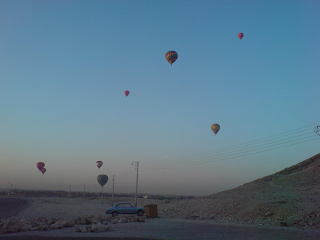




Qaser Ipriem used to be a hill about seventy meters high before Lake Nasser to surround and turn to an island. The title of the site means the primer palace; Ipriem was derived from the Latin word prime while Qaser is the Arabic word for palace. Qaser Ipriem area was among the most fertile areas of lower-Nubia as the Nile used to flow next where it is found and it's soil used to be enriched by the annual floods ,that allowed It's dwellers to benefit from these features and supply the countless travelers and pilgrims all facilities required from accommodation , food, drinks and so on. Qaser Ipriem's hill was the primary signal to Egypt for all pilgrims and travelers and due to that it used to have all means of comfort and conveyance to attract all caravans and all fortification. We are still able to see the ruins of the Nubian fortress which is around 700 BC and the royal chapels of the 18 &19 dynasties which are between 1400 & 1300 BC beside the Coptic cathedral which was built after 500 AD. Most of the finds of Qaser Ipriem are displayed at both the Nubia museum and at the Coptic museum. Then the ship continued sailing to Abu Simble site.
Before midday everybody almost gathered on the top deck to attend the charming approach to the great site of Abu Simble then Prince Abbas played a very impressive music belongs to Vangelis. Nothing was much more impressive in our travels than the approach to Abu Simble
The Great Abu Simble and the Small Abu Simble were both saved by the UNESCO as well as by many countries which supported Egypt and the human heritage. The Great Abu Simble was transferred between 1964-1968 to a much suitable spot, enough high from Nasser lake. Originally the great temple was carved out of sandstone hill exceeds 45 m in height which the lake could cover all within few years .The UNESCO experts had to build a surrounding coffer-dam around the two temples which two concrete domes on the new locations then both temples were dismantled and assembled within these four years. While searching for perfect location for the great temple the UNESCO organization had the challenge of trying to keep the unique alignment with the sun which the great Abu Simble had been to have. The ancient Egyptians had to study where to find mathematically and astronomically a certain spot where it can receive the rays twice a year to shine on the face king Ramesses II on both occasions his birthday and his coronation. That phenomenon used be witnessed on the 21of February and on 21of October yearly before to be moved as the sun used to reach innermost room of the temple across the pillared halls and the vestibules to through it light on the statue of king which is among the four statues of the holy of holies at sunrise twice a year. While all efforts and the high budget "exceeded 50 millions USD" presented by most of the world they could not find the correct angle to keep the alignment or the original dates so they missed a day from each and became the 22second from each month.
The giant Abu Simble had a great impact on our southern neighbors who had never seen such as a gigantic structure ever even they believed king Ramsess to be no man his temple is a creation of god therefore that pharaoh had been deified over there.
We enjoyed the visit to Abu Simble and also we attended its famous sound and light show. Then on morning of the following day we flew to Cairo to continue our tripe for another four nights.








































